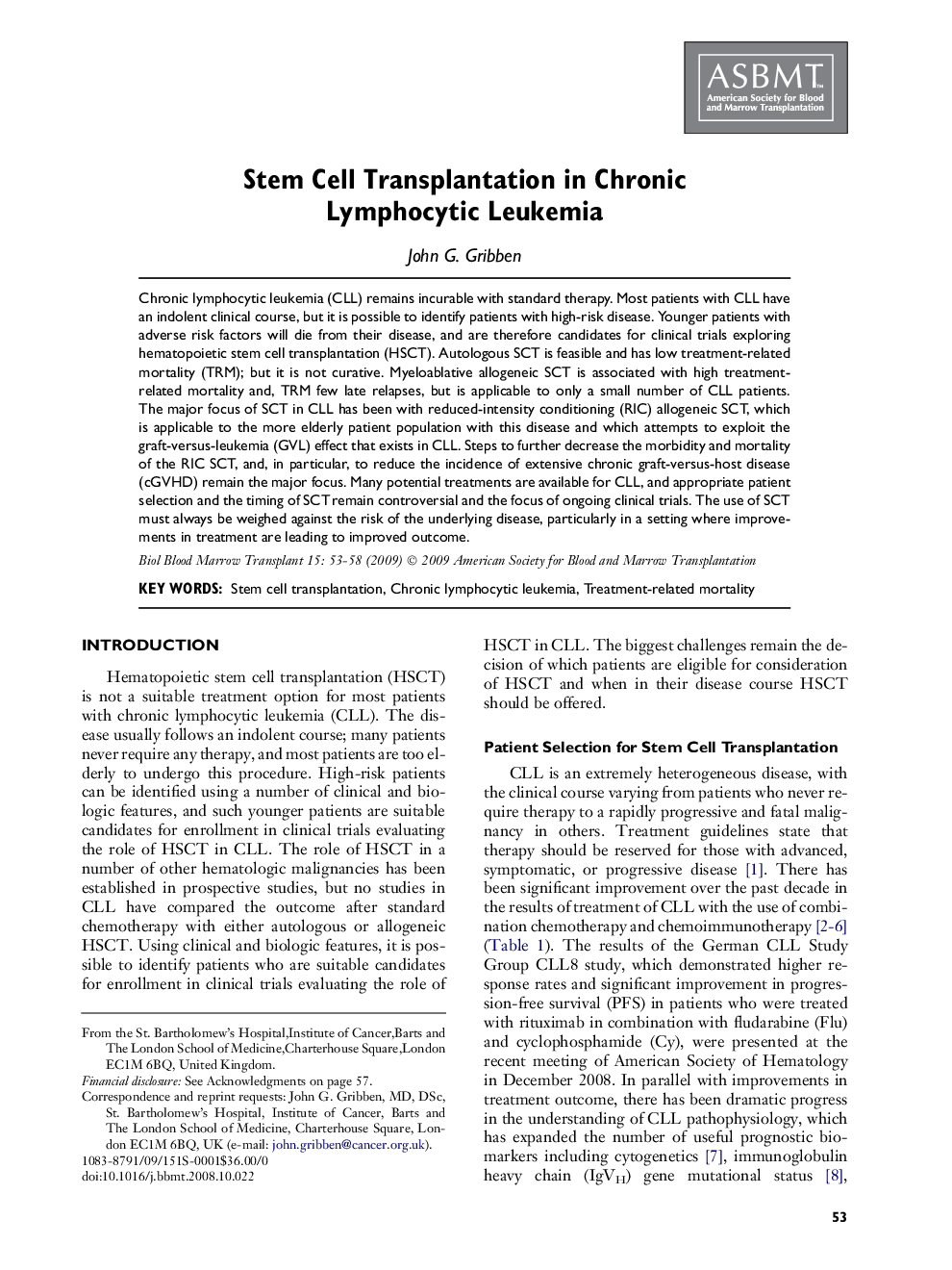| Article ID | Journal | Published Year | Pages | File Type |
|---|---|---|---|---|
| 2103626 | Biology of Blood and Marrow Transplantation | 2009 | 6 Pages |
Chronic lymphocytic leukemia (CLL) remains incurable with standard therapy. Most patients with CLL have an indolent clinical course, but it is possible to identify patients with high-risk disease. Younger patients with adverse risk factors will die from their disease, and are therefore candidates for clinical trials exploring hematopoietic stem cell transplantation (HSCT). Autologous SCT is feasible and has low treatment-related mortality (TRM); but it is not curative. Myeloablative allogeneic SCT is associated with high treatment-related mortality and, TRM few late relapses, but is applicable to only a small number of CLL patients. The major focus of SCT in CLL has been with reduced-intensity conditioning (RIC) allogeneic SCT, which is applicable to the more elderly patient population with this disease and which attempts to exploit the graft-versus-leukemia (GVL) effect that exists in CLL. Steps to further decrease the morbidity and mortality of the RIC SCT, and, in particular, to reduce the incidence of extensive chronic graft-versus-host disease (cGVHD) remain the major focus. Many potential treatments are available for CLL, and appropriate patient selection and the timing of SCT remain controversial and the focus of ongoing clinical trials. The use of SCT must always be weighed against the risk of the underlying disease, particularly in a setting where improvements in treatment are leading to improved outcome.
